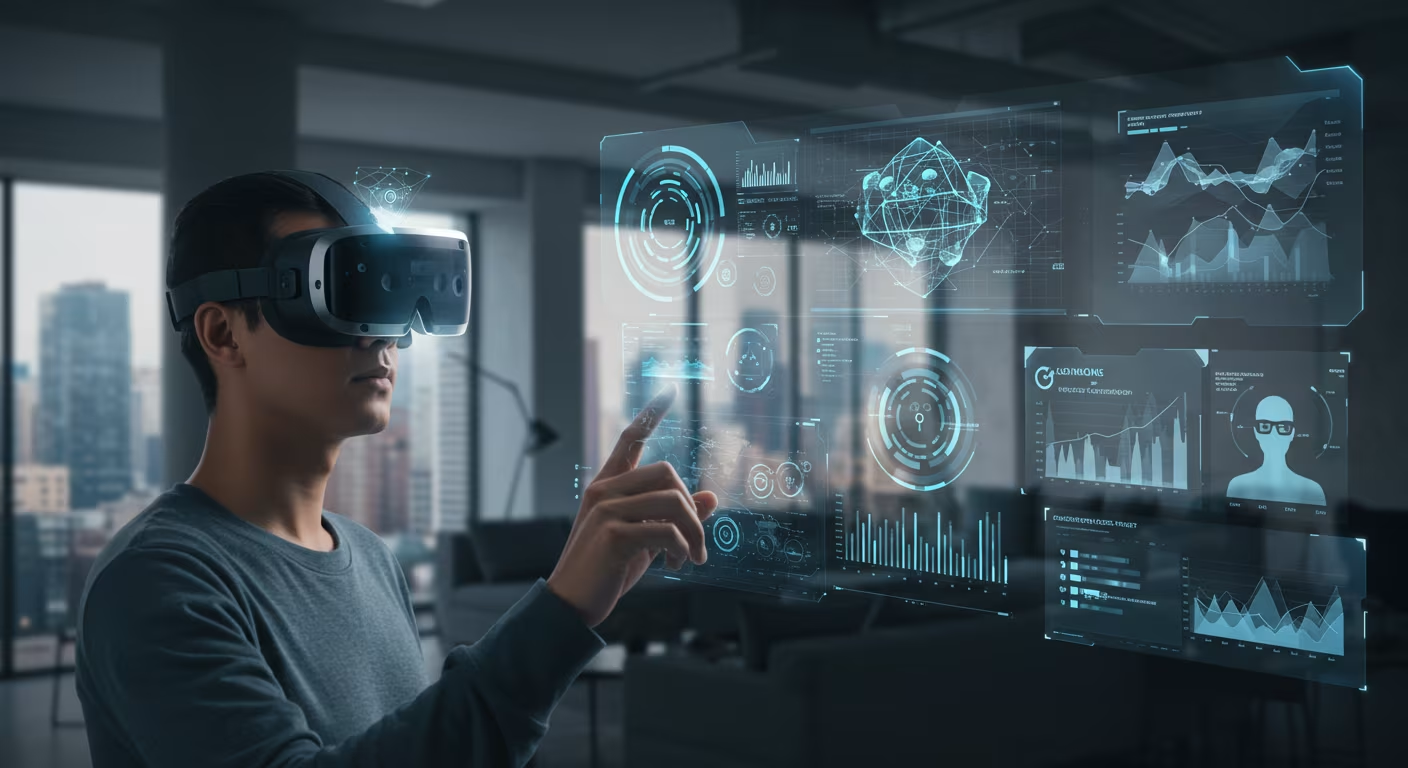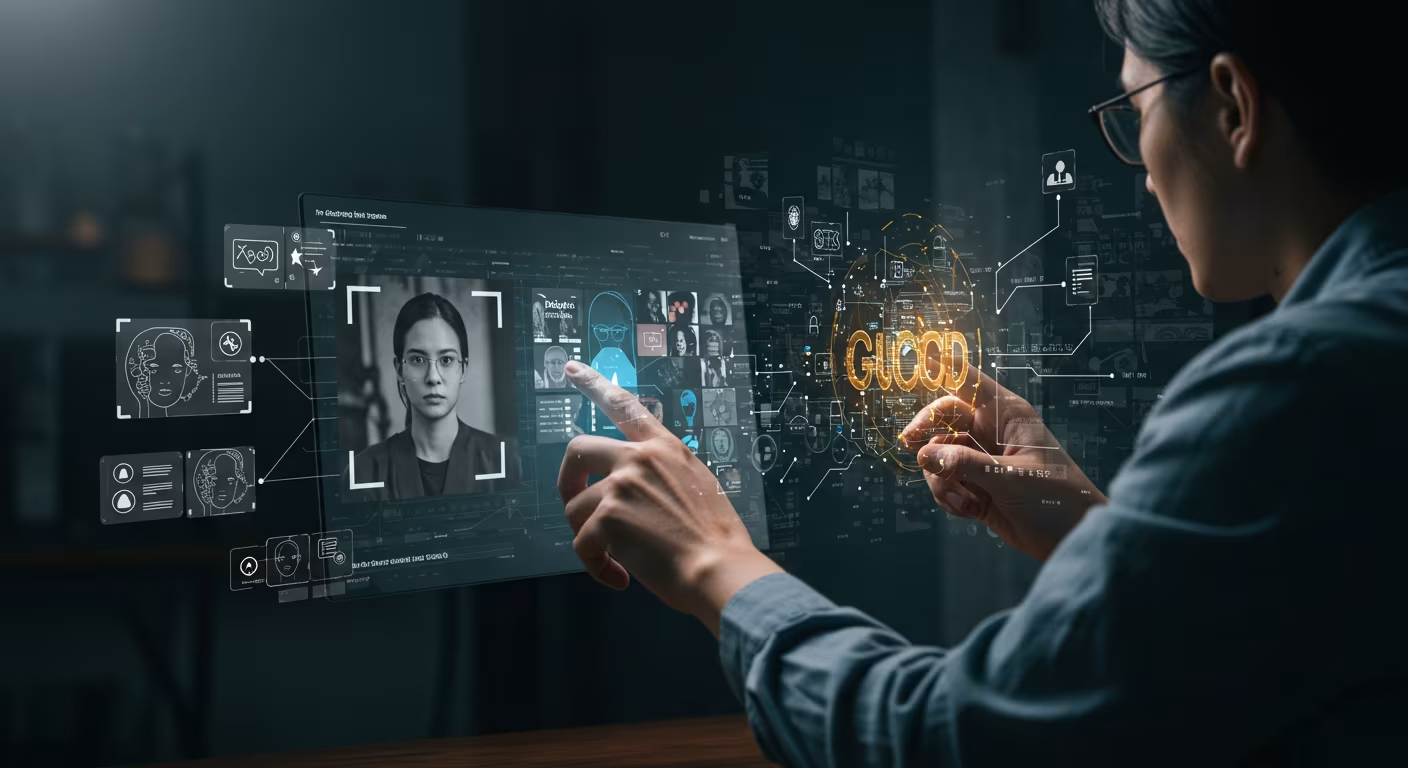As digital and physical realities continue to blur, one transformative technology is emerging at the center of this convergence: Spatial Computing. It’s more than just virtual reality (VR) or augmented reality (AR)—it’s the foundation of a new era where computers understand and interact with the world in three dimensions, just like humans do.
From next-generation wearable devices to immersive training simulations and smart environments, spatial computing is reshaping how we work, learn, create, and connect. It’s a powerful blend of AI, sensors, computer vision, and 3D mapping, all working together to create a seamless interface between the physical and digital worlds.
But what exactly is spatial computing? Why is it gaining momentum now? And how will it impact industries and daily life in the years to come?
What Is Spatial Computing?
Spatial computing refers to technologies that allow computers to perceive and interact with the physical world using 3D spatial awareness. It involves sensing, mapping, interpreting, and reacting to the environment through a combination of:
- Augmented Reality (AR)
- Virtual Reality (VR)
- Mixed Reality (MR)
- Computer Vision
- AI and Machine Learning
- IoT and Edge Devices
- Wearables (such as AR headsets and smart glasses)
In simple terms, spatial computing gives machines the ability to understand space, track movement, and overlay digital information onto the real world.
For example, an AR headset used in construction can display blueprints directly onto a work site, adjusting in real time as workers move. A surgeon wearing spatial glasses can visualize internal organs in 3D during a procedure. A consumer using a smartphone can place a digital couch into their living room to see how it fits before buying.
Spatial computing is not one single device or software—it’s an ecosystem of interconnected technologies enabling a context-aware, interactive, and immersive experience.
Key Technologies Behind Spatial Computing
The magic of spatial computing is made possible by several advanced components working together:
- Sensors and Cameras – Depth sensors, LiDAR, GPS, accelerometers, and cameras capture physical surroundings.
- Simultaneous Localization and Mapping (SLAM) – Allows a device to map an environment and track its own movement within it.
- Computer Vision and AI – Interprets visual inputs and understands objects, gestures, and spaces.
- 3D Graphics and Rendering – Creates immersive visuals for AR, VR, and MR environments.
- Edge Computing and Cloud Processing – Handles real-time data analysis and interaction without noticeable lag.
- Wearable Interfaces – Devices like Apple Vision Pro, Microsoft HoloLens, Meta Quest, and AR glasses act as user portals into spatial experiences.
Together, these tools allow digital content to respond naturally to human gestures, gaze, voice, and movement—making spatial computing feel intuitive and responsive.
Why Spatial Computing Matters Now
Spatial computing isn’t entirely new—early forms have been in development for decades. But recent breakthroughs in processing power, AI, battery life, and 5G connectivity have made it viable for mainstream use.
Major tech companies are investing heavily in this space:
- Apple’s Vision Pro headset promises immersive computing experiences, blending apps with the real world in 3D.
- Meta’s Reality Labs is developing spatially aware metaverse experiences for consumers and businesses.
- Microsoft’s HoloLens 2 is already in use for industrial training, remote collaboration, and surgery.
- Snap, Google, and Niantic are building mobile AR ecosystems leveraging spatial awareness.
The market potential is massive. According to PwC, the global economic impact of immersive technologies like AR and VR—key enablers of spatial computing—could reach $1.5 trillion by 2030.
Real-World Applications of Spatial Computing
Spatial computing is not a futuristic fantasy—it’s already in use across a growing number of industries:
1. Healthcare
- Surgeons use AR overlays during complex procedures.
- Medical students train in VR-based simulations.
- Patients use spatial apps for physical rehabilitation and mental health therapies.
2. Manufacturing and Engineering
- Digital twins simulate physical machinery for testing and maintenance.
- Workers use AR headsets for guided assembly and real-time troubleshooting.
- Remote experts can collaborate on physical equipment using MR tools.
3. Retail and E-Commerce
- Customers visualize furniture, clothing, or makeup in their real environments.
- In-store experiences become interactive and personalized.
- Virtual showrooms allow immersive product exploration.
4. Architecture and Construction
- Teams review building plans in 3D within the actual site.
- Issues are detected early through spatial walkthroughs.
- Clients can experience spaces before construction begins.
5. Education and Training
- Students explore virtual classrooms, historical landmarks, or scientific models.
- Spatial learning boosts retention through hands-on engagement.
- Enterprises use spatial tools for onboarding and safety training.
6. Entertainment and Gaming
- Mixed-reality games blend physical movement with digital challenges.
- Live events incorporate spatial elements for immersive fan engagement.
- Artists and creators design experiences in 3D environments.
Challenges to Overcome
Despite its potential, spatial computing still faces hurdles:
- Hardware costs remain high, limiting widespread consumer adoption.
- Battery life and form factor need improvement for all-day use.
- Privacy and data ethics are major concerns, especially with devices that scan and record surroundings.
- Standardization is lacking—different platforms use incompatible systems.
- User adaptation takes time, especially in industries unfamiliar with immersive tech.
These are not insurmountable barriers, but they will need thoughtful solutions as spatial computing moves from early adopters to mass adoption.
The Future of Spatial Computing
Looking ahead, spatial computing will likely become as integrated into our lives as smartphones and the internet are today.
Imagine walking into your home and your smart glasses recognize your mood, adjust the lighting, and bring up your to-do list in 3D space. At work, you review complex data sets as floating visualizations, manipulate models with your hands, and collaborate with colleagues as avatars. In leisure, you explore museums across the world without leaving your living room.
The line between “digital” and “real” will continue to dissolve—and spatial computing will be the interface that makes that evolution seamless.
From Screens to Spaces
We are transitioning from an era where we interact with information through screens to one where we interact with information in space. Spatial computing is the bridge between the digital and physical, enabling machines to understand the world more like humans do—and allowing humans to experience the digital world more naturally than ever before.
For businesses, creators, educators, and consumers, this marks a turning point. The question is no longer if spatial computing will become part of daily life—but how quickly, and how deeply, it will change the way we live and work.





